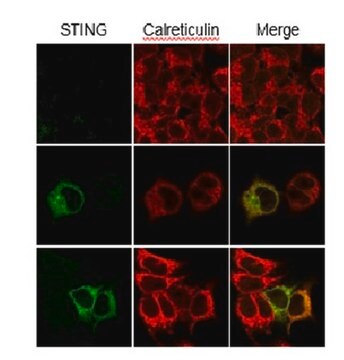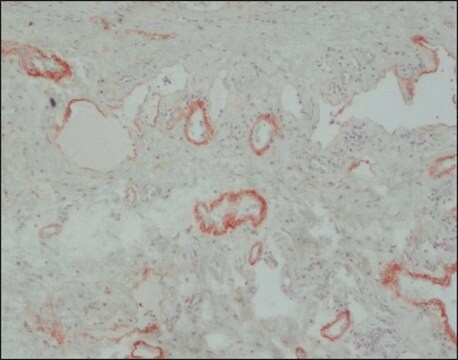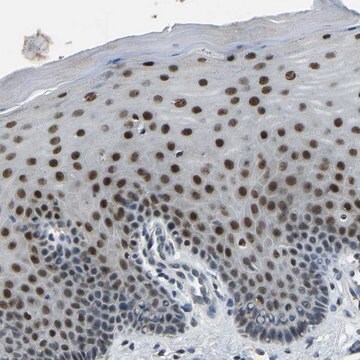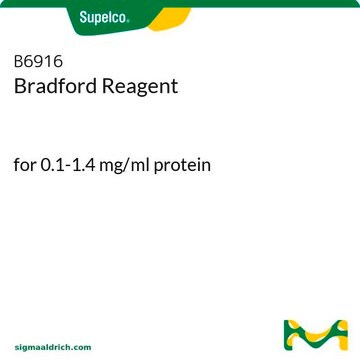MABF213
Anti- STING, clone 41 Antibody
clone 41, 0.5 mg/mL, from rat
Sinonimo/i:
Stimulator of interferon genes protein, mSTING, Endoplasmic reticulum interferon stimulator, ERIS, Mediator of IRF3 activation, MMITA, Transmembrane protein 173, STING
Scegli un formato
Scegli un formato
About This Item
Prodotti consigliati
Origine biologica
rat
Livello qualitativo
Forma dell’anticorpo
purified antibody
Tipo di anticorpo
primary antibodies
Clone
41, monoclonal
Reattività contro le specie
mouse
Concentrazione
0.5 mg/mL
tecniche
flow cytometry: suitable
western blot: suitable
Isotipo
IgMκ
N° accesso NCBI
N° accesso UniProt
Condizioni di spedizione
wet ice
modifica post-traduzionali bersaglio
unmodified
Informazioni sul gene
mouse ... Sting1(72512)
Categorie correlate
Descrizione generale
Immunogeno
Applicazioni
Qualità
Western Blotting Analysis: A 1:2,000 dilution of this antibody detected STING in 10 µg of RAW264.7 cell lysate.
Descrizione del bersaglio
Stato fisico
Non trovi il prodotto giusto?
Prova il nostro Motore di ricerca dei prodotti.
Codice della classe di stoccaggio
12 - Non Combustible Liquids
Classe di pericolosità dell'acqua (WGK)
WGK 2
Punto d’infiammabilità (°F)
Not applicable
Punto d’infiammabilità (°C)
Not applicable
Certificati d'analisi (COA)
Cerca il Certificati d'analisi (COA) digitando il numero di lotto/batch corrispondente. I numeri di lotto o di batch sono stampati sull'etichetta dei prodotti dopo la parola ‘Lotto’ o ‘Batch’.
Possiedi già questo prodotto?
I documenti relativi ai prodotti acquistati recentemente sono disponibili nell’Archivio dei documenti.
Filtri attivi
Il team dei nostri ricercatori vanta grande esperienza in tutte le aree della ricerca quali Life Science, scienza dei materiali, sintesi chimica, cromatografia, discipline analitiche, ecc..
Contatta l'Assistenza Tecnica.







